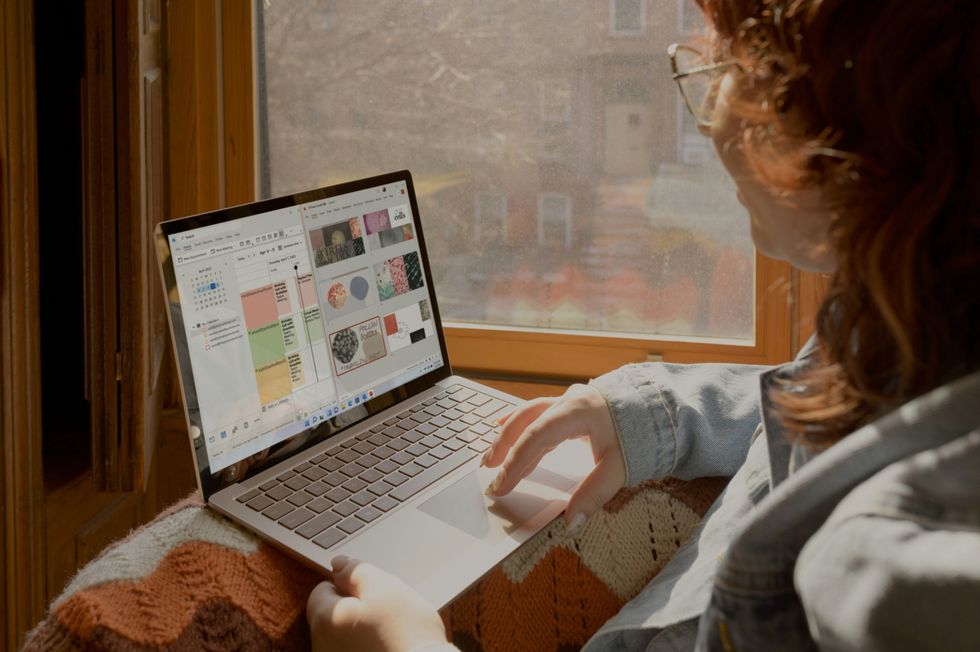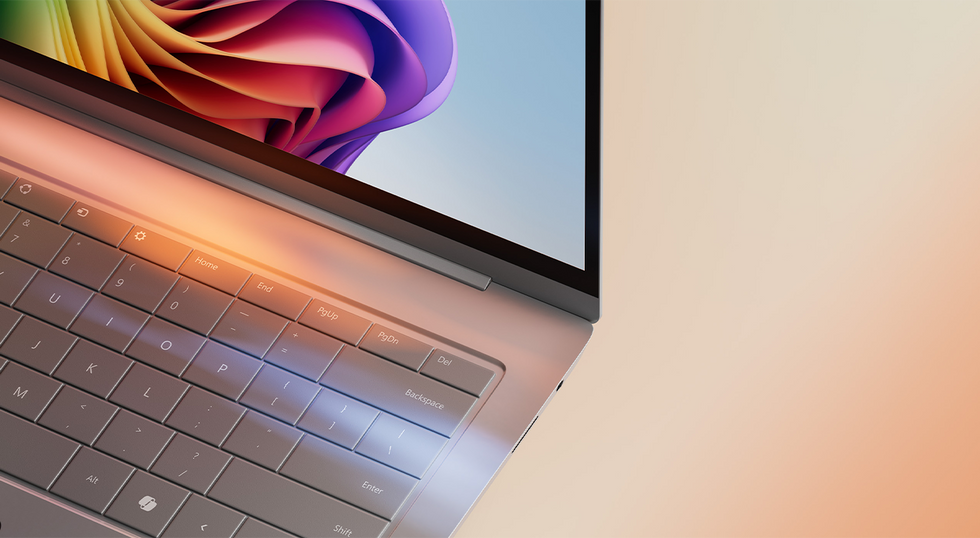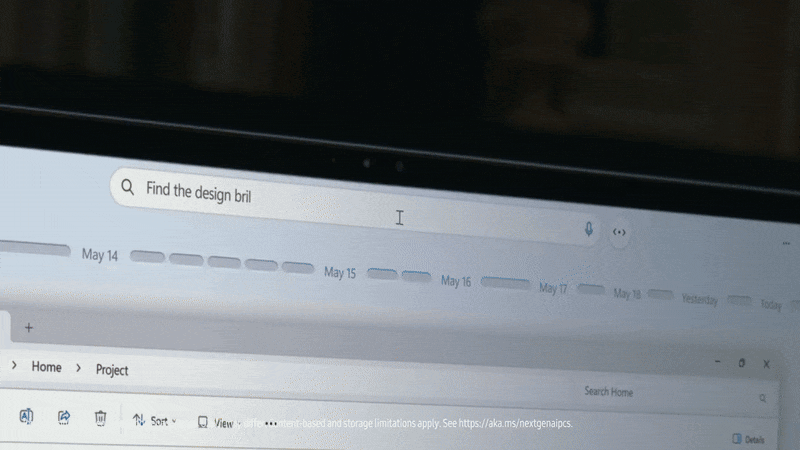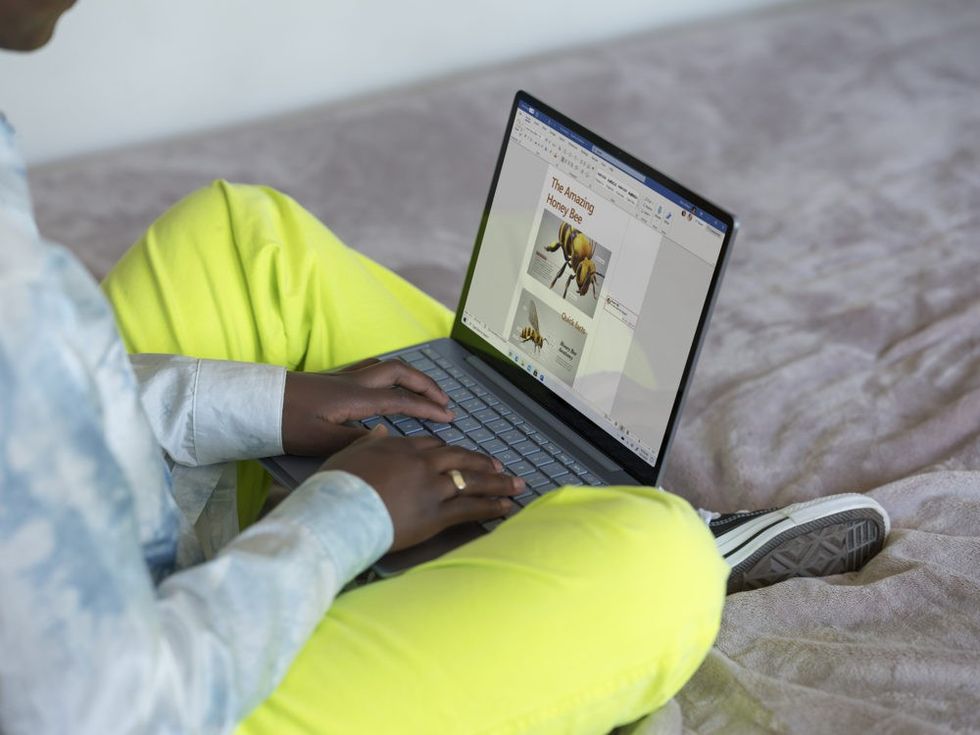Windows 10 has surged in popularity — despite the looming deadline for the decade-old operating system. For those who missed the memo, Microsoft will end support for Windows 10 on October 14, 2025.
After that deadline, Microsoft will no longer issue critical software updates to fix vulnerabilities, bugs, and glitches in the software. Without these importance patches, Microsoft warns that anyone still relying on Windows 10 will be left “at greater risk for viruses and malware”. Yikes.
Source: StatCounter Global Stats – Windows Version Market Share
Despite the clock ticking on this deadline, Windows 10 has seen a surprising surge in usage, while simultaneously, Windows 11 adoption has unexpectedly dropped. That’s according to the latest figures from Statcounter, which reveals that Windows 10’s market share increased to 61.8% in November — marking an unexpected reversal of the operating system’s previous downward trend.
Meanwhile, Windows 11 experienced its first significant decline in adoption, dropping to 34.94% of all PC powered by an operating system created by Microsoft — almost a full percentage point lower than October’s figures.
 Windows 10, which launched back in 2015, is still used by millions of people worldwide …and that number is only increasing MICROSOFT PRESS OFFICE | UNSPLASH
Windows 10, which launched back in 2015, is still used by millions of people worldwide …and that number is only increasing MICROSOFT PRESS OFFICE | UNSPLASH
The shift is particularly pronounced in the United States, where Windows 11 usage fell by more than three percent whilst Windows 10 grew by a similar margin. This development comes as a setback for Microsoft, which has been actively pushing users to move away from Windows 10 ahead of the support deadline in October 2025.
It’s also reversal compared to the previous eight consecutive months of steady transition from Windows 10 to Windows 11, raising concerns about Microsoft’s upgrade strategy with just 10 months remaining until support ends.
According to Statcounter’s global data, Windows 10 now commands a 61.8 % share of the Windows operating system market. Windows 11, in contrast, has fallen to 34.94%, marking its first significant decline since its launch.
Industry analysts suggest the decline could be linked to users reversing their upgrade decisions — switching back to Windows 10, now that Microsoft has confirmed the cost of its Extended Security Update (ESU) scheme.
But despite the troubling trend, Microsoft shows no sign of softening its firm stance on Windows 11’s hardware requirements, particularly regarding TPM 2.0 technology. The Redmond-based firm emphasised that TPM 2.0 is essential for enhanced identity and data protection on Windows devices — despite reducing the number of Windows 10-powered machines that are able to upgrade to Windows 11, saving them from the end of support deadline.
In a recent blog post, Microsoft declared TPM 2.0 “a non-negotiable standard for the future of Windows.”
The technology integrates with new security features such as Credential Guard and Windows Hello for Business.
Microsoft also requires Windows 11 devices to support virtualization-based security and hypervisor-protected code integrity. These requirements effectively limit support to processors released from 2018 onwards.
Despite user frustration, Microsoft shows no signs of relaxing these strict hardware requirements as Windows 10’s end-of-support date approaches. The hardware requirements pose a significant dilemma for an estimated 400 million Windows 10 users whose devices don’t meet Windows 11’s specifications.
Microsoft has recently strengthened its warnings against installing Windows 11 on unsupported hardware.
Users attempting to install Windows 11 on incompatible devices will now see a watermark on their desktop and warning messages in Settings. The company has updated its disclaimer to state that “damages to your PC due to lack of compatibility aren’t covered under the manufacturer warranty.”
Users who proceed with installation must explicitly acknowledge they understand these risks.
The firm is offering no compromise for the estimated 400 million users with incompatible hardware, who must either upgrade their devices, continue with Windows 10 and pay for extended support, or risk running an unsupported operating system. This stance leaves many users facing difficult decisions about their computing future as the October 2025 deadline approaches.
As the clock ticks down for millions, this milestone in the life of Windows 10 — first launched in July 2015 — is a good time to take stock and consider the three choices facing desktop PC and laptop users: upgrade to Windows 11, buy a new device with Windows 11 preinstalled, or pay for additional support to maintain digital security. We’ve outlined the costs and risks of all of these approaches below…
Upgrade to Windows 11
If you’re using a Windows 10 machine that meets the minimum criteria to run Windows 11, then Microsoft will let you upgrade to the newer operating system free of charge. The Redmond-based firm has already started to preemptively notify compatible Windows 10 PCs about this cost-free option.
Check the eligibility of your laptop or desktop PC using the PC Health Check app baked into the operating system, or third-party tools like WhyNotWin11. If your hardware is compatible, the simple upgrade process involves clicking the Windows Start button, then select Update & Security> Windows Update.
Windows 11’s minimum requirements have been a point of contention since its release back in October 2021. The desktop operating system demands a 64-bit processor, a minimum of 4GB of RAM and 64GB of storage. More controversially, it requires TPM 2.0 and Secure Boot capabilities, features absent in many older PCs.
Microsoft says this hardware is required as it enables many of the security features baked into the operating system — making it more secure and ensuring your important files remain under lock-and-key.
While there are unofficial workarounds exist to bypass eligibility checks — enabling PCs that do not meet these requirements to install the successor to Windows 10, these involve registry modifications and may lead to future update issues. Some users have found success with third-party tools like Rufus, which offers a Registry bypass hack for Windows 11 24H2 in-place upgrades on ineligible systems.
Without these workarounds, the strict requirements have left numerous Windows 10 users unable to upgrade, causing some to warn that as many as 240 million working laptops could be destined for landfill.
 Brand-new laptops from Microsoft, Samsung, ASUS, and others come equipped with the latest Qualcomm chipset to enable exclusive features in Windows 11, like real-time translation, improved video call quality, and Recall. There’s also a new key on the keyboard to launch the Copilot AI assistant MICROSOFT PRESS OFFICE
Brand-new laptops from Microsoft, Samsung, ASUS, and others come equipped with the latest Qualcomm chipset to enable exclusive features in Windows 11, like real-time translation, improved video call quality, and Recall. There’s also a new key on the keyboard to launch the Copilot AI assistant MICROSOFT PRESS OFFICE
Upgrade to a new device
If you can’t upgrade the operating system running on your current device, then it might be time to upgrade the hardware itself. Microsoft sparked controversy by advising users to “buy a new PC” if their current hardware doesn’t support Windows 11. The guidance — published in a recently updated support document — raised eyebrows due to potential environmental and financial impacts.
Critics argue that discarding functional computers due to its decision not to allow them to upgrade to a newer version of the operating system generates unnecessary electronic waste, or e-waste. However, Microsoft contends that new devices offer enhanced security features and a smoother transition to Windows 11, which boasts an entirely new look and AI-powered capabilities.

Recall is one of the flagship features of these new Copilot+ PCs as it lets you search for text, images, and URLs that have appeared on-screen on your laptop. Microsoft has described the feature as a “photographic memory” for everything you do on your Windows 11-powered Copilot+ PC
SAMSUNG PRESS OFFICE
If you’re shopping for a new desktop PC or laptop today, then you won’t find hardware that ships with Windows 10 preinstalled. The newer Windows 11, which launched in October 2021, has become the standard for all modern PC hardware.
Earlier this year, MIcrosoft introduced a new segment of PCs — known as Copilot+ PCs — that deliver unique Artificial Intelligence functionality, including the controversial Recall feature. These Copilot+ PCs also have a new key on the keyboard dedicated to the Copilot AI assistant, the first shake-up to the Windows keyboard layout since the Start key was introduced back in 1994.
Microsoft has spearheaded this all-new category of Windows 11 laptops with its own new Surface Laptop and Surface Pro, while Samsung’s first Copilot+ PC is Galaxy Book 4 Edge. There are also devices with all of the exclusive Windows 11 features from ASUS, Lenovo, and HP too.
Pay for additional support on Windows 10
For the first time in its history, Microsoft will offer its optional Extended Security Updates (ESUs) subscription plan to both businesses and consumers. Previously reserved for companies with a large fleet of devices, this paid programme allows firms to receive critical security updates for up to three years after the end of support.
Microsoft has confirmed plans to offer Extended Security Updates (ESUs) for Windows 10 and published pricing, with the first year due to set back businesses $61 (£48.19).
To incentivise Windows 10 users to upgrade to the next iteration of the desktop operating system, Microsoft will double the cost every year. The full breakdown of costs is as follows:
- Windows 10 ESU — $61 (£48.19) for first year
- Windows 10 ESU — $122 (£96.39) for second year
- Windows 10 ESU — $244 (£192.78) for third and final year
This is not the cost for consumers, with Microsoft promising that pricing for the average Windows 10 user “will be shared at a later date.” However, we’re likely to see the same pricing structure, with costs doubling each year to try to push people to finally switch away from Windows 11.
It’s also worth noting that these prices are per device, so ESU can quickly become pretty expensive if you’ve got a swathe of laptops and desktop PCs that you don’t want to upgrade to Windows 11.
MIcrosoft has stated that ESU pricing for everyday home users will be revealed closer to the deadline. GBN will keep you updated as soon as we know the official UK pricing for business and home users.
Some industry watchers had speculated that Microsoft would be forced to offer extended support for Windows 10 at no extra cost due to the vast number of PCs still powered by the operating system. However, despite the widespread usage, Microsoft is seemingly set on charging for the privilege.
This has allowed rival Google to take advantage of the situation to bolster its own marketshare of desktop PCs by offering a free upgrade for all Windows 10 users to its ChromeOS system, which is based on the world’s most popular web browser and boasts years of security updates and support.
Third-party security firm 0patch has also used the opportunity to muscle-in on Microsoft’s territory — offering critical software support to Windows 10 users after the October 14, 2025 deadline at a much more affordable cost than Microsoft wants to charge.
What happens if you don’t do anything?
Continuing to use Windows 10 after support ends carries significant risks.
Microsoft has issued a stark warning to millions of PC owners that unsupported devices will be “at greater risk for viruses and malware”. That’s because, without a regular drumbeat of security updates, PCs quickly become vulnerable to cyber attacks and data theft. Any glitches or vulnerabilities discovered in the operating system by hackers will never be patched, leaving you exposed each time you head online.
But it’s not just about losing security features. Windows 10 users will almost certainly find that certain features or software no longer function properly over time. To safeguard your digital security and ensure smooth operation, it’s crucial to plan your transition away from Windows 10 before the October 2025 deadline.
Microsoft’s Jason Leznek emphasised the importance of preparing for the transition: “By now, you’ve probably heard that Windows 10 will reach end of support on October 14, 2025.
“You can enroll those PCs in the paid Extended Security Update (ESU) program. ESUs allow you to receive critical and/or important security updates for Windows 10 PCs when you need extra time to move to Windows 11”
 Windows 10, which launched back in 2015, is still used by millions of people worldwide MICROSOFT PRESS OFFICE
Windows 10, which launched back in 2015, is still used by millions of people worldwide MICROSOFT PRESS OFFICE
What’s new in Windows 11?
If you haven’t used Windows 11 before, the latest desktop operating system boasts an entirely-new look with tightly-rounded corners across all applications, similar to macOS. There’s also a lot of transparent elements and you can switch between Light and Dark Modes throughout the day to make everything easier on your eyes.
Windows 11 puts a new focus on Copilot — the latest Artificial Intelligence (AI) assistant built by Microsoft, which can find documents across your hard-drive and cloud storage, change system settings, translate in real-time, and much more. Microsoft has also improved the Snap functionality to send applications to corners of the screen, with groups saved so you can jump back into the same layout at a later date.
 Windows 11 reworks the design of the operating system and brings the iconic Start Menu to the centre of the screen for the first time MICROSOFT PRESS OFFICE
Windows 11 reworks the design of the operating system and brings the iconic Start Menu to the centre of the screen for the first time MICROSOFT PRESS OFFICE
The Start Menu has also been redesigned, and sits at the centre of the taskbar that runs along the bottom of the screen. Windows 11 also resurrects widgets, which feature personalised feeds of the latest headlines, weather forecasts, traffic conditions, sports scores, and stock market data, all powered by Artificial Intelligence.
For the first time, Windows 11 lets you set a different wallpaper image or colour for every virtual desktop you’re running — handy for those who use one desktop for work applications and another for personal use. Default apps, like Photos, Notepad, Media Player, Mail, and Settings have all been redesigned from the ground-up too.
Since there’s no end of support deadline on the horizon for Windows 11, PC owners can expect to receive a swathe of new features, new designs, and clever AI tricks coming in free software updates in the coming months and years.